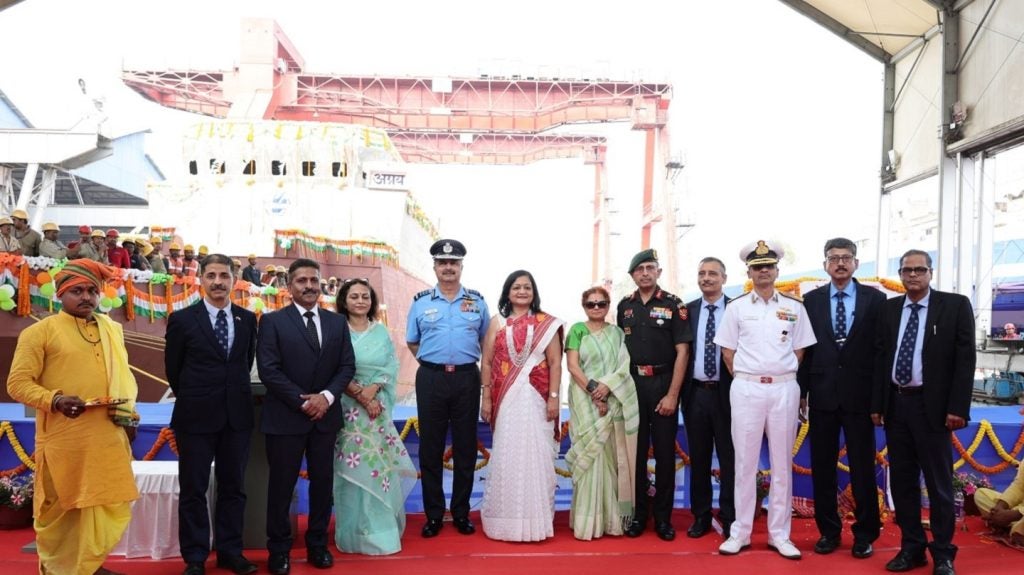The Indian Navy launched 'Agray' and 'Akshay', the fifth and sixth ships within its anti-submarine warfare (ASW) shallow water craft fleet on 13 March 2024.
These two ships have been re-christened as Agray and Akshay, named after the former Abhay-class corvettes Agray and Akshay of Indian Navy.
The Arnala-class will replace the in-service Abhay-class ASW corvettes of Indian Navy and are also designed to undertake anti-submarine operations in coastal waters, low intensity maritime operations, and mine-laying operations.
The contract for building eight ASW ships was signed between the Indian Ministry of Defence and Garden Reach Shipbuilders & Engineers (GRSE), based in Kolkata on 29 April 2019 in a deal worth $1.9bn.
The ASW craft ships are 77.6 metres (m) long and 105m wide with a displacement of 900 tonnes and endurance of over 1800 nautical miles.
In December 2023, the Navy began laying the keels for two ASW craft with Cochin Shipyard, the largest Indian shipbuillding company. The construction of the new fleet forms a part of the government’s ‘Aatmanirbhar Bharat’ (Make in India) initiative.
ASW craft will perform sub-surface surveillance along coastal waters, co-ordinated ASW operations with aircraft, and destroy sub-surface targets in inland waters.
These warships will also perform search and rescue operations during both day and night in coastal areas, defend intruding aircraft, and lay mines on the sea bed.
The vessels can sprint fast for short bursts for maintaining contact with a detected submarine. It will also have the capability of sharing information of enemy submarine with friendly anti-submarine warships and aircraft through sophisticated data link networks.
India’s nuclear-wielding neighbour, Pakistan, is currently acquiring two Type-039A diesel-electric submarines from China. GlobalData projects both Yuan-class boats are due to be worth $897m and $833m respectively over the next decade.
Moreover, these new submarines will employ air-independent propulsion methods, which allows a non-nuclear submarine to operate beneath the surface without access to atmospheric oxygen – a major augmentation to conventional attack submarines.
Currently, Pakistan operates three Agosta-90B class diesel-electric submarines, acquired between 1999 and 2008, as well as two Agosta-70 class boats, procured between 1979 and 1980.









